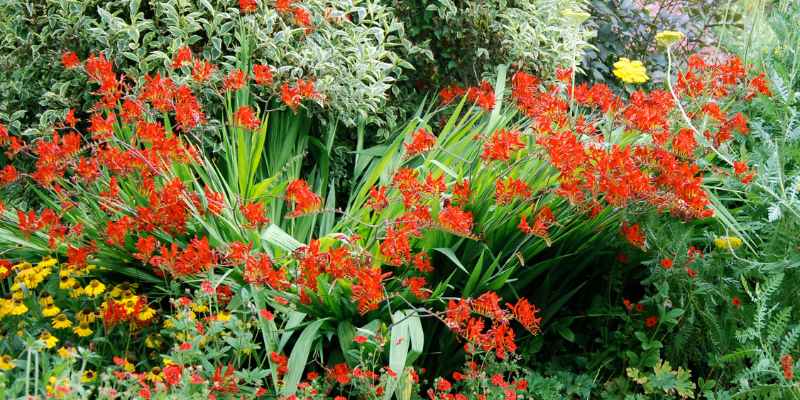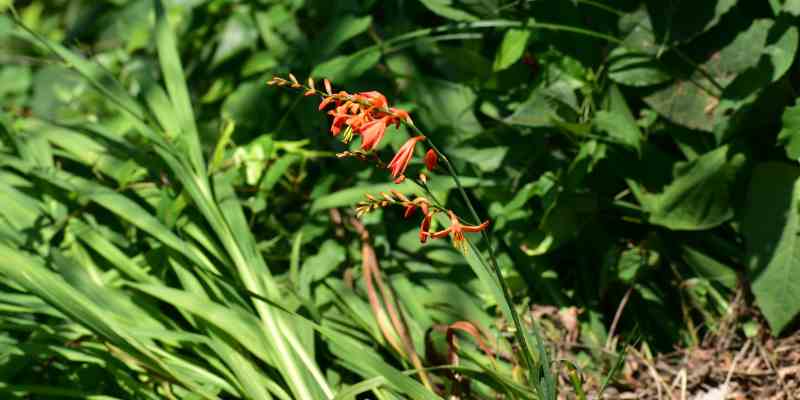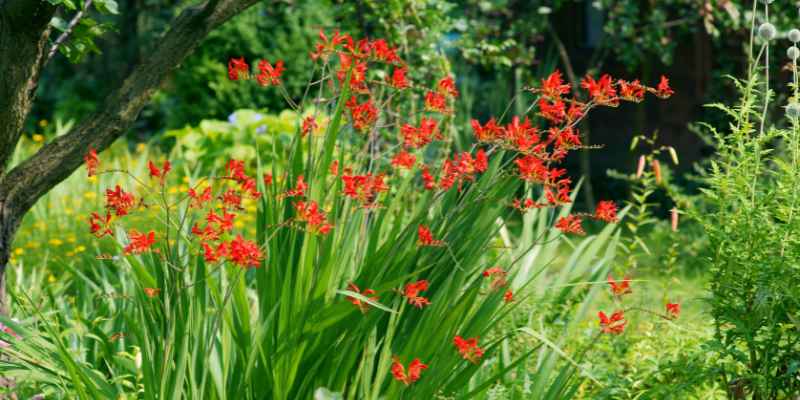We love the vitality that Crocosmias bring to the garden, with their arching stems in vibrant colours, from orange to red for the famous 'Lucifer'. However, while crocosmias establish themselves slowly but surely, their clump eventually ages and requires attention to rejuvenate them. To do this, we proceed with a division of the clump, which is also an effective way to manage an invasive Crocosmia.
Here are some tips for maintaining and renewing an aging Crocosmia!

Why and When to Renew a Clump of Crocosmias?
As is often the case with bulbous perennials, certain signs of aging clearly indicate that a clump of Crocosmias needs some care:
- its foliage is less dense and its flowering is less abundant.
- the appearance of holes in the centre of the clump is another clear sign of exhaustion.
We will therefore proceed to renew the clump to re-stimulate flowering, maintain an attractive shape, and avoid congestion of the corms, which can lead to minor issues (such as rust in poorly drained soil).
Proceed once the clump has grown sufficiently and shows the aforementioned signs of aging, typically after five years, in autumn or early spring. Additionally, dividing also helps control an invasive Crocosmia...

Maintaining and Prolonging an Existing Clump
Some simple actions can extend the life of the perennial before a complete renewal. Removing faded flower stems after flowering prevents seed formation and promotes an essential energy reserve for this bulbous plant.
Key Steps to Divide and Rejuvenate a Clump of Crocosmias
I will provide you with tips for dividing a well-established clump in the tutorial "Easily Multiply Crocosmias". We will therefore carry out what is known as a clump division to regenerate the plant.
Here are the key steps:
Necessary Equipment: Fork, disinfected pruning shears, and gloves.
- Lift the clump gently with a fork to avoid damaging the corms;
- Manually separate the corms by selecting the largest and healthiest-looking ones, discarding any that are soft or diseased; Cut the stems and dry foliage if you are working in autumn, using pruning shears;
- Replant the corms, spacing them 10 to 15 cm apart, at a depth of 8-10 cm, possibly on a draining layer of sand in heavy soil.
- Water generously to keep the soil moist for the first few weeks.
Take advantage of the clump division to enrich the soil with compost before planting the corms.
If you are performing this division in autumn, apply a layer of mulch with the cut dry stems in pieces over the planting area. This will help the corms survive the first winter, which can often be challenging for Crocosmias. In mild climates, a light mulch with fallen leaves or compost will suffice.
































Comments